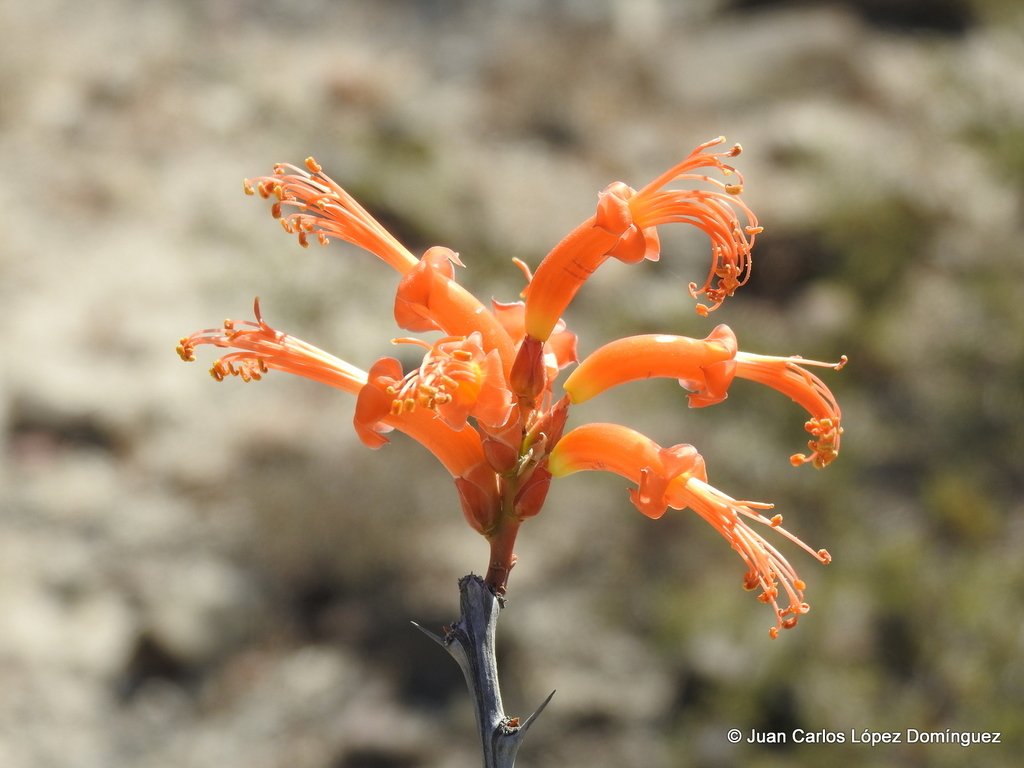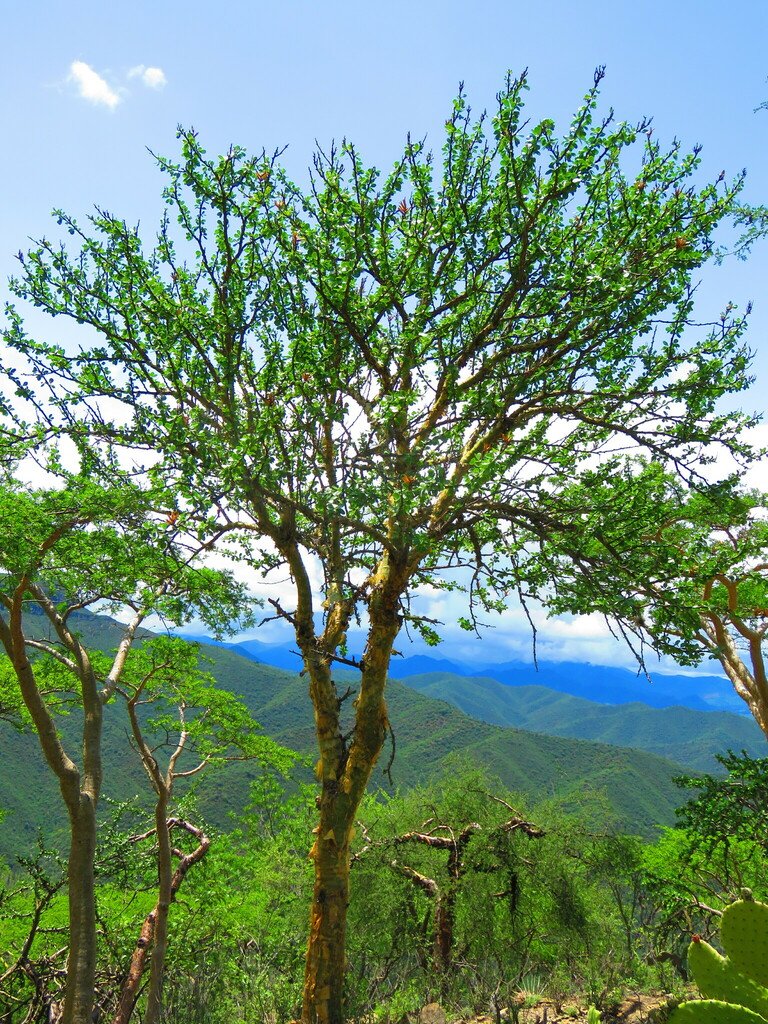Rosalillo
Fouquieria formosa
This is a very upright, arborescent (tree-like) species can reach 25-30’ tall (occasionally individuals get taller) tough often plants are much shorter than that. The trunk is smooth with yellow-green bark that peels in large sheets. When exposed to intense sun, the main trunk may turn a coppery color with the exfoliating bark. The species flowers with orange, tubular flowers typical of the genus from October through February; however, some flowering can occur anytime during the year.
Environmental conditions may induce variation based on the location of plants. In the arid regions within Puebla and Oaxaca, the plants in this area tend to have glabrous stems, long spines and short flowers, with a relatively medium to high number of stamens. In Morelos and Mexico, the moist highlands contain plants with short spines and a relatively medium to low numbers of stamens. Some populations are almost entirely thornless. This geographic variation has tempted botanists to divide this species into subgroups, but the variation seems to be based on environmental conditions, not genetic.
Grow in full to part sun. Plants are low water users, but established plants in the ground benefit from 2-3 deep waterings a month (container plants are watered 2-3 times a week or more in summer). In winter, plants in the ground can be watered maybe once a month if no rain occurs, Plants in containers should be watered about once a week in the winter. Hardy to about 20°F which is surprising for a plant native to more tropical regions of Mexico.
Frequently planted by Mexicans and Zapotec in living fences; Zapotec use this species as medicine for cold sores (granos de los labios); and chew flower buds or young flowers.
Pollinated primarily by hummingbirds. Utilization of flowers by perching birds, however, may also occur. Additionally, small transverse cuts of the corolla tube just above the sepals characteristic of the robbing habit of carpenter bees (Xylocopa spp.) and bumblebees (Bombus spp.) are commonly observed on specimens throughout its range. As the Hower tube provides a landing platform away from the exserted stamens and stigma, insect visitors probably do not affect pollination unless they collect pollen.
The species name, formosa, derives from the Latin name formosus, meaning "beautiful".
Occurs on rocky alluvial slopes and valleys on lateritic to calcareous soils from Lago de Chapala region of Jalisco to southeastern Oaxaca. It mostly occurs in tropical deciduous forest and arid tropical scrub vegetations.

The very orange flowers, photo by Juan Carlos López Domínguez, iNaturalist

This species is much more arborescent than most, even the more wild-looking specimens. Photo by Rosario, iNaturalist

The trunks often develop some very interesting character. Photo by Arturo Mora Santiago, iNaturalist

This specimen looks even more like a conventional tree, al beit with a gorgeous trunk. Photo by Leticia Soriano Flores, iNaturalist

